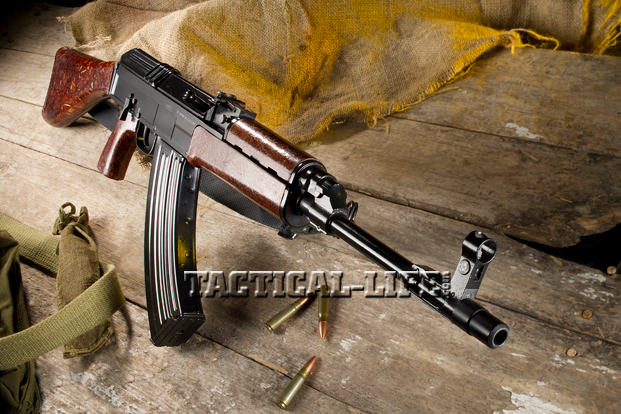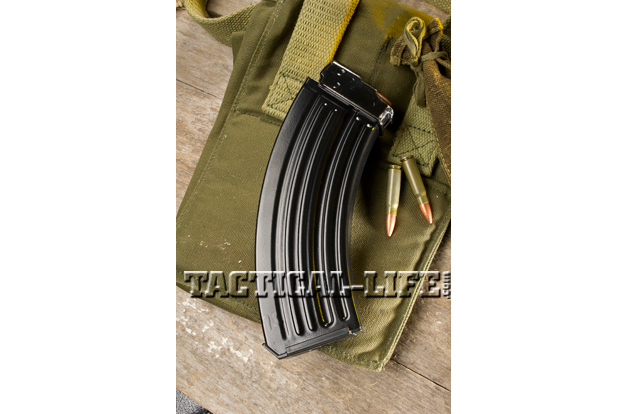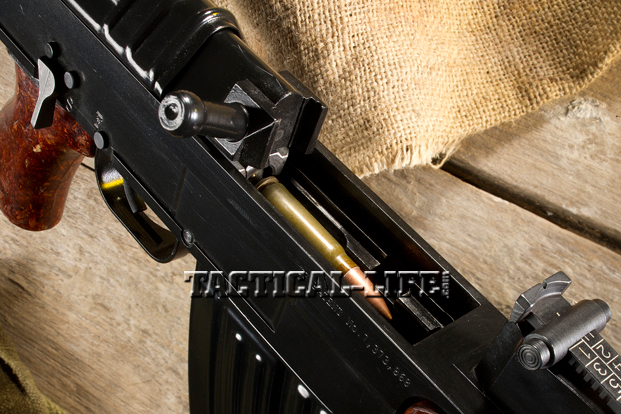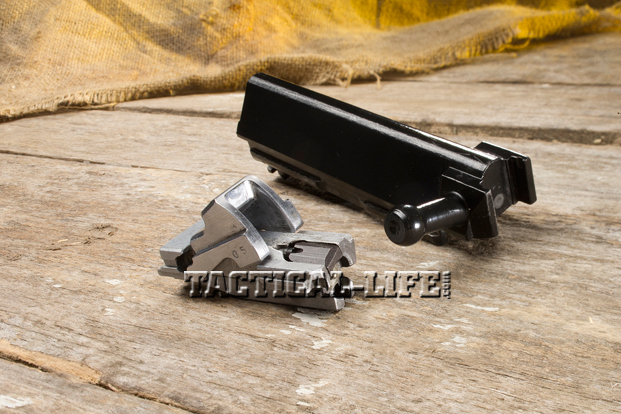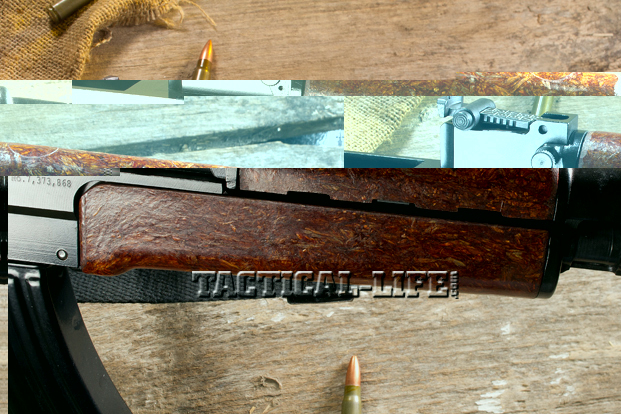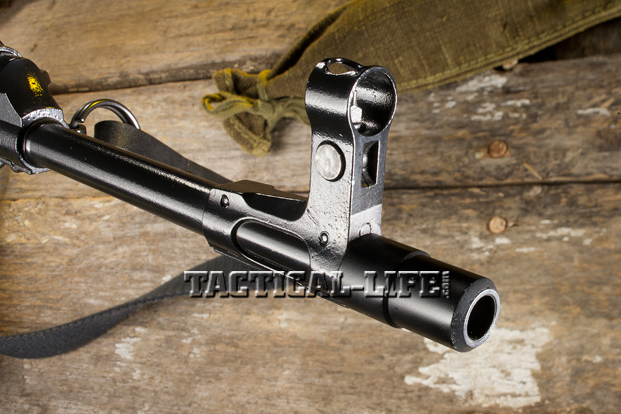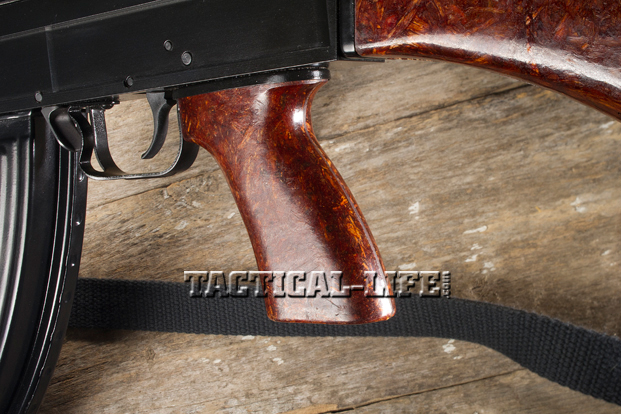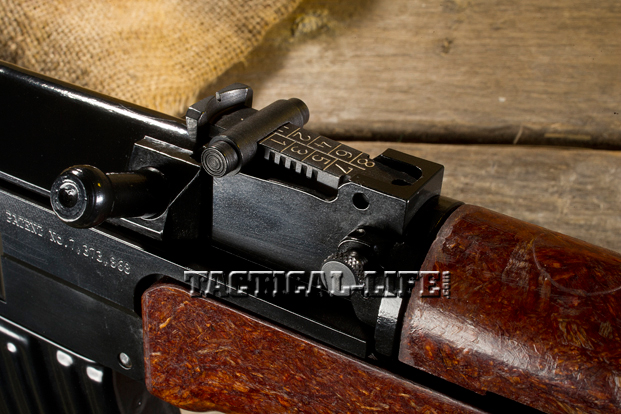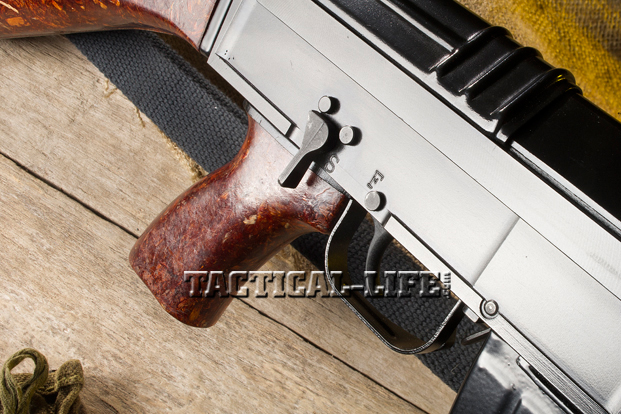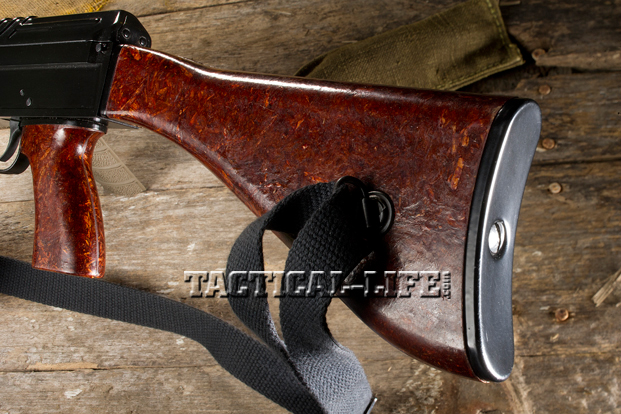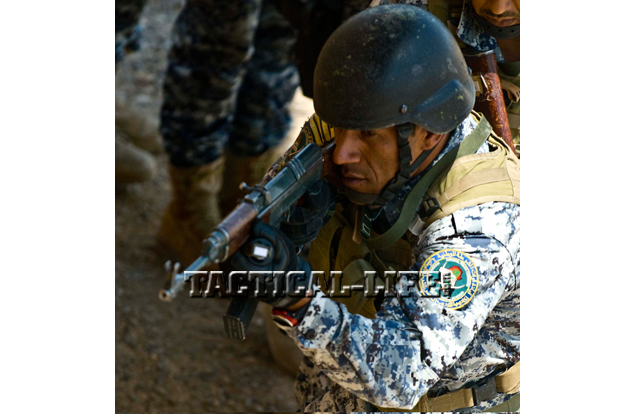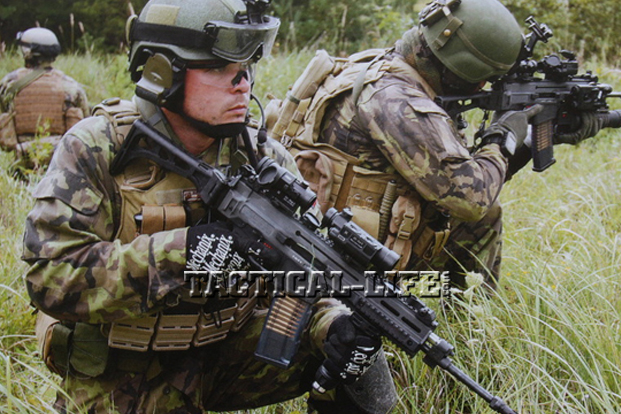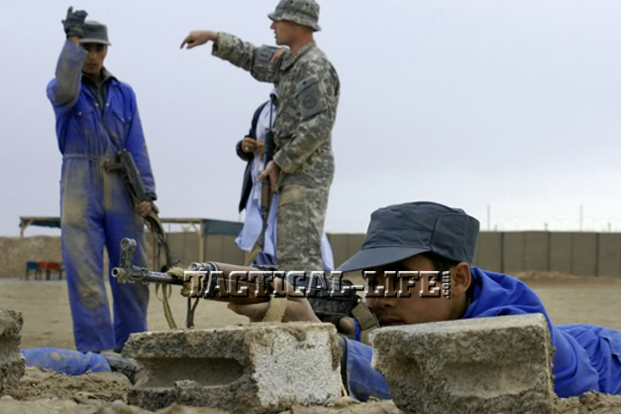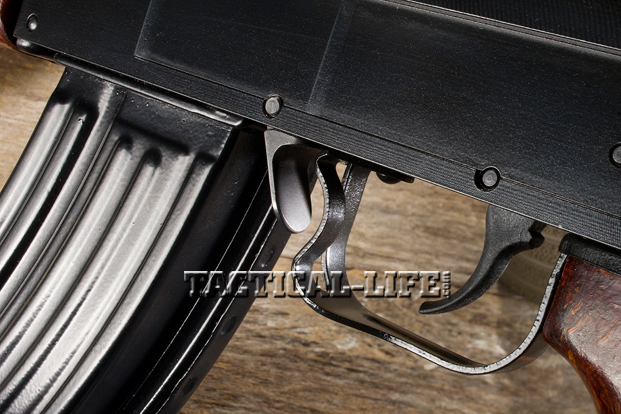1945 the Red Army drove the Germans out of Czechoslovakia and allowed an interim government to be established. Elections the following year saw the Czech Communist Party, the KS, win 38 percent of the vote, representing the best-ever performance by a European Communist party in a free election. President Edvard Beneš asked Klement Gottwald of the KSČ to be Czechslovakia’s prime minister, giving the KSČ control over the police and armed forces. The party came to dominate ministries dealing with propaganda, education, social welfare, agriculture and the civil service. Political infighting and civil unrest resulted in a successful Soviet-backed Communist coup in February 1948. The new government in Prague officially allied Czechoslovakia with the USSR and became a member of the Warsaw Pact.
Czechoslovakia has been a center of small-arms manufacturing since the 17th century. In 1919 the firms of the Ceská Zbrojovka (Bohemian Arms Factory), better known as CZ, was established and quickly became a major player in the international small-arms market. After World War II, the Czechoslovakian army began a program to replace the Soviet and ex-German weapons in service with arms of native design. With a preference for the Soviet SKS carbine, in 1952 the army adopted a CZ-designed semi-auto rifle, the 7.62mm Samonabíjecí puška vzor 52, which fired a proprietary cartridge with a rimless, bottle-necked case that was 45mm in length: the 7.62mm náboj vzor 52. (Vzor is Czech for “model” and is usually abbreviated as “vz”.) Five years later, bowing to Soviet pressure for standardization, most vzor 52 rifles were converted to fire the Soviet 7.62mm patron obr. 1943g. Known as the 7.62mm náboj vzor 43 in Czechoslovakian service, it consisted of a rimless, bottle-necked case that was 39mm long and whose 122-grain, FMJ spitzer bullet had a muzzle velocity of 2,330 feet per second (fps). We know it as the 7.62x39mm. In the mid 1950s the U.S.S.R. began pressuring all the Warsaw Pact armies to standardize on Soviet-pattern weapons, which, when it came to shoulder-fired arms, meant the AK-47. While most Eastern Bloc armies toed the line, the Czechs once again insisted upon using weapons of native design. Accordingly, in 1956 a design team led by CZ’s chief engineer, Jirí Cermák, began the task of building a selective-fire assault rifle that could do everything the AK-47 could—but better.
Gun Details
While the resulting weapon, the 7.62mm samopal vzor 58 (7.62mm submachine gun model 58) aped the appearance of the AK-47 with its slab-sided receiver, a curved, 30-round magazine, an exposed barrel and a separate pistol grip, mechanically it was quite different. Where the AK-47 used a pivoting hammer, the vzor 58 utilized a straight-line striker to fire the cartridge. The AK-47 operates by venting power gases from the barrel, which move a gas piston affixed to the bolt carrier rearward, rotating a two-lug bolt, unlocking and pushing it to the rear with the carrier, extracting and ejecting the spent cartridge case, and cocking the hammer. The recoil spring pushes the hammer forward, stripping the next round from the magazine and chambering it as the bolt is rotated once again, locking it into battery. The vzor 58 also uses gases bled into a cylinder above the barrel, where they push a short-stroke gas piston rearward so it impacts the bolt carrier and forces it rearward, while a separate spring returns the piston to the forward position. The gas cylinder is vented and the remaining gases are exhausted into the atmosphere via two ports in the cylinder. The entire piston rod is chromium-plated to prevent fouling. A wedge in the vzor 58’s bolt carrier lifts a pivoting locking-breech block out of recesses in the receiver, allowing the entire unit to move rearward, extracting and ejecting the spent cartridge case, and cocking the striker, which operates on a separate spring from the bolt group spring. The recoil spring then pushes the bolt carrier forward, stripping the next round from the magazine and chambering it as the breech block is cammed down and locked to the receiver.
Advertisement — Continue Reading Below
Like its early era Soviet counterparts (AK variants produced after the initial stamped steel attempt), the vzor 58’s receiver is machined from solid steel. The vzor 58 is a selective-fire weapon, but it replaces the AK’s awkward safety/selector lever with a conveniently located switch on the right side of the receiver, which is easier—and quieter—to operate. When forward, the bolt carrier seals the entire receiver, preventing debris from entering the action. In addition, the vzor 58’s bolt remains to the rear when the magazine is empty, and there is a bolt hold-open catch located next to the paddle-shaped magazine release. The stock and forend were made from wood-impregnated plastic, although late-production rifles use high-impact plastic furniture, some with rails on the forend for mounting optical sights, lights, lasers and other tactical devices. Three versions of the Czechoslovakian rifle were produced: the vzor 58 P (Pechotní, or “infantry”) with a fixed buttstock; the vzor 58 V (výsadkový, or “airborne”) with a metal shoulder stock that can be folded along the right side of the receiver to reduce its length, making it more manageable by airborne and vehicle-mounted troops; and the vzor 58 Pi (Pechotní s infracerveným zamerovacem, or “infantry with infrared sight”), a vzor 58 P with a dovetail bracket on the left side of the receiver for mounting a night-vision sight. The vzor 58 Pi is often fitted with a detachable folding bipod and a conical flash suppressor. Switching between the vzor 58 P’s and V’s buttstocks only requires the removal of a single pin at the rear of the receiver and swapping in the stock of choice.
The vzor 58’s alloy 30-round magazines are not interchangeable with those from AK-type weapons. Unlike the AK magazine, the vzor 58’s magazine can be reloaded while in the rifle through the open receiver, with 10-round chargers (stripper clips). The weapon’s front sight is a hooded post, while the rear is an open U-notch adjustable by tangent from 100 to 800 meters. The rear sight leaf has a “U” setting (univerzální, or “universal”) intended for nap-shooting at ranges up to 300 meters. A bracket for a knife-type bayonet is located beneath the front-sight base. More recently, many vzor 58s have been fitted with a flash suppressor/muzzle brake.
Service
The vzor entered service in late 1959, and while it didn’t see combat with Czechoslovakian soldiers for almost five decades, it was soon turning up in hot spots around the world. The Czechs have always been known for their entrepreneurial acumen, and as with earlier weapons, they were only too happy to sell vzor 58s to any and all buyers. In addition, at the urging of their Soviet “allies,” the Czechs supplied these guns to various national liberation groups around the world, in the name of International Socialist Brotherhood.
The Cold War saw the vzor 58 supplied to the USSR’s “friends” and proxies in Ethiopia, Nicaragua, Uganda, Cuba, Libya, Somalia, Lebanon, Guatemala, Cyprus, Angola, Mozambique, Iraq, Tanzania and Grenada. The weapons saw their first combat service with both sides during the genocidal Nigerian-Biafran civil war (1967–1970). Others were provided to the Viet Cong and NVA during the Vietnam War, and India has purchased numbers of them. In fact, vzor 58s began showing up in just about any trouble spot around the globe where Soviet-caliber small arms were common—it is not surprising that large numbers of vzor 58s are being used in Afghanistan and Iraq.
In 1993 the citizens of Czechoslovakia voted to peacefully divide the country into two independent states: the Czech Republic and Slovakia. Both nations became members of NATO, and vzor 58-equipped Czech and Slovak units have served with UN and NATO forces in Bosnia, Desert Shield, Desert Storm, Afghanistan and Kosovo, as well as in Iraq with Coalition forces. Photographic evidence would seem to indicate that the vzor 58 V has become the preferred weapon with Czech and Slovak troops currently serving in Afghanistan, many of which are tricked out with tactical lights, lasers and M4-style collapsible buttstocks. While the vzor 58 remains the standard rifle of the Czech and Slovak armies, the Czechs recently announced the adoption the Pušca CZ805, while the Slovaks are taking the HK416 into service. Both of these modern assault rifles are chambered for the standard 5.56mm NATO rifle cartridge.
Advertisement — Continue Reading Below
Shots Downrange
Dan Brown at CzechPoint, Inc. was kind enough to provide me with their civilian version of the vzor 58 P, the Sa vz. 58 Military, for test-firing. These rifles are assembled in the Czech Republic from new-production and original vzor 58 parts. In order to satisfy BATFE import requirements, CzechPoint uses entirely new receivers that have thicker sidewalls, so optic-side rails can be mounted on them (a service that CzechPoint also offers) while preventing the installation of any original full-auto components. In addition, a long steel bracket (known as a bridge) is located in front of the trigger and prevents a full-auto trip arm from being installed. CzechPoint’s rifles are imported with single-stack magazine wells so that the magazine capacity is limited to 10-rounds. Once in the U.S., the rifles are modified to comply with Section 922(r) so original military furniture can be installed. At the same time, the magazine is milled to accept 30-round surplus magazines. To satisfy the 922(r) regulations, CzechPoint installs the following U.S. made parts: a glass-filled nylon trigger, steel sear, steel disconnector, polymer magazine follower and polymer floorplate. (And as picayune as it may sound, CzechPoint also had to remove the bayonet lug! Don’t you feel safer now?)
The rifle I received was in unissued condition with nicely finished metal and the typical reddish-brown stock, forend and pistol grip. I test-fired the Sa vz. 58 on my club’s 100-yard range. Remington and Winchester sent along supplies of their respective 7.62x39mm ammunition, while Graf & Sons provided some Russian-made WPA steel-case test fodder.
After zeroing in the rifle at 50 yards, I moved my targets out to twice that distance and proceeded to shoot for score. Before I go any further, I have to mention that I did not care for the sights at all. I have never understood why Soviet and Eastern Bloc arms-designers have stuck with open sights on their military rifles when an aperture rear sight provides so many advantages. Among them are a longer sight radius, quicker sight alignment, no view obstruction of your target, and faster target acquisition and transitioning to multiple targets. My only other complaint concerns the stock’s short length of pull. I assume the short buttstock was used so that the rifle would be more comfortable and solid when wearing a lot of webbing gear, bulky clothing and/or body armor? That being said, the Sa vz. 58 had a very nice trigger with a modest bit of take-up and a crisp let-off. I fired nine five-shot groups ranging in size from 2.75 to slightly over 4 inches, most of them printing a bit to the right. As the barrel heated up, the rifle tended to string groups vertically, and being that temperatures were hovering around 99 degrees that afternoon, I took a 5-minute pause between each five-shot group. The next day, a cloudy and cooler one, saw me at the range again, running a series of drills at 40 yards. The Sa vz. 58 proved 100 percent reliable and it proved almost easy to keep all my rounds in the highest scoring zones of the targets. I must say that the CzechPoint Sa vz. 58 Military performed better than any civilian-legal AK-type rifle I have fired up until this time. Put a decent set of aperture sights on this rifle and you will have a real shooting machine! For more information on CzechPoint, visit czechpoint-usa.com. ★
